4000m above sea level, on the Altiplano in Bolivia, lies Tiahuanacu
with the famous sun gate.
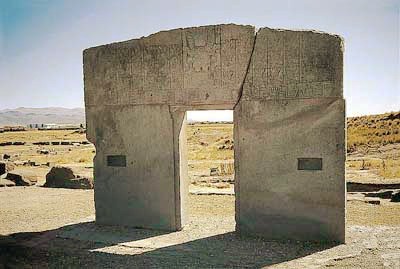
No one knows for certain when this
culture developed,
from which culture it originated and, when and why it disappeared again.
It is assumed that the Tiwanaku culture came from the Huari,
a old peruvian culture.
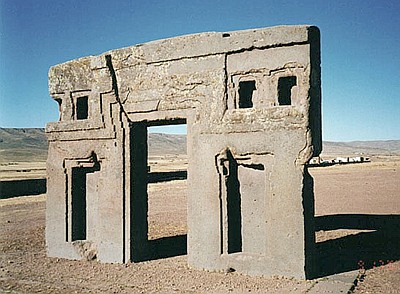
The culture site, located at the
Titicaca Lake between Peru and Bolivia,
was once a temple complex. The numerous images of presumed gods
are proof of this. The complex and the stones are done with such
a precision that it cannot be considered only a profane center.
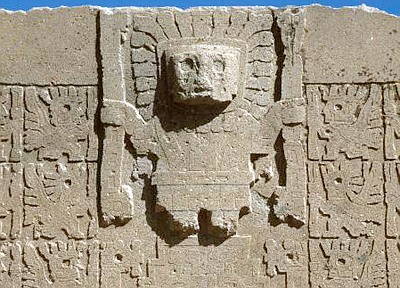
But the hammer, ignored by most
tourist routes,
lies a few 100m away. The debris field of Puma Puncu.
But who is interested in stone blocks wieghing up to 1000 tons!?

The exact meaning of the
age of the complex is still not known.
Some archeologists link the location with the Aymara Indians,
but how can such a primitive culture, without any technical tools,
be in a position to work and transport huge platforms
weighing up to 1000 tons?
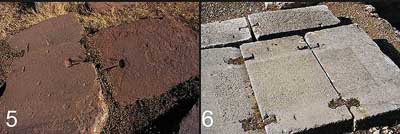
The
monoliths are held together with metal brackets (5).
The same system of plate stabilization is found in Delphi (6),
but thousands of kilometers lies between both temple complexes.
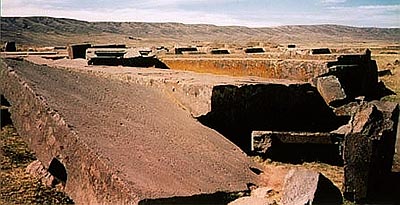
The
quarry of andesite and trachyt blocks lies 17km away!

Stone
blocks in mass production, just like out of a concrete factory,
lie around the debris area.

The various forms match each other like a
building block system!
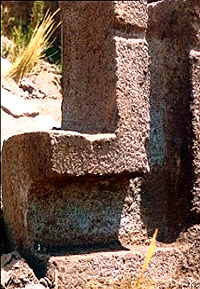 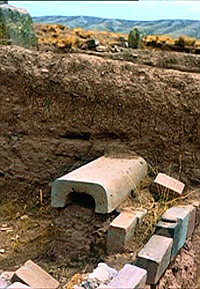
It can be assumed that these stones could
have been used for a canal system or
protective enclosure for underground cables, if one sees these
as parts moulded from concrete!

Which cult shall the archeologists link to
the good Aymara Indians
if these can judge such precision work?
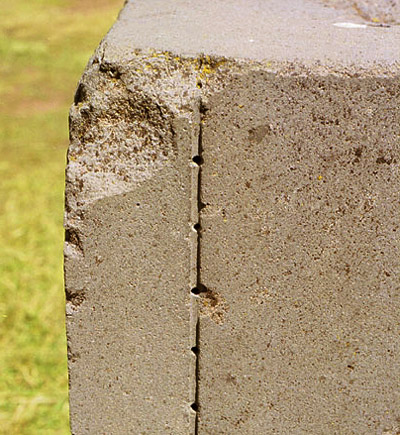
With
which tools were these blocks worked upon, and for which reason were
they created should provoke only a shrug from our "experts".
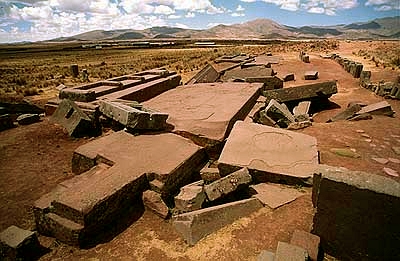
And once more an ancient
legend gives the answer:
" Here first lived the gods, as these left the land,
they destroyed their "dwelling" in only one night."
|